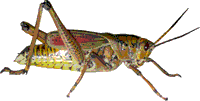Entomology Collections, General

Entomology Papers from Other Sources
Document Type
Article
Date of this Version
1998
Abstract
In an effort to develop a chemical control strategy for the invasive Argentine ant. Linepithema humile (Mayr), in Haleakala National Park, Maxforce, which is formulated with 0.9% hydramethylnon, was used in test plots to determine the efficacy of the ant bait in the field. Initially, Maxforce was tested at 2 application rates: broadcast at 2.25 kg/ha (2 lb/ acre) and 4.5 kg/ha (4 lb/acre). Later, the following treatments were also tested: a Maxforce and honey granule mix, Maxforce with 0.5% hydramethylnon, Maxforce with a different solvent, Maxforce distributed in exposed piles, and Maxforce distributed in covered piles. Although there were significant differences in the magnitude of ant reduction among the various treatments, all yielded the same general result. Foraging ant numbers at monitoring bait stations declined an average maximum of 97.0% in the test plots, with no plots achieving 100% reduction. At 2 mo after treatment the mean number of foraging ants was reduced by 92.1%. Nest survival in the plots appeared to be affected to a lesser degree, but could not be monitored accurately over the longer term because of the phenomenon of nest movement. A 2nd identical application 1 mo after the initial application in plots treated with Maxforce at 2.25 and 4.5 kg/ha did not result in eradication. Bait molding, quick mortality, and toxicant breakdown from UV radiation created a short exposure time to the bait and toxicant, which may have been the main obstacle to achieving eradication.


Comments
Published in Environ. Entomol. 27(6): 1473-1481 (1998).